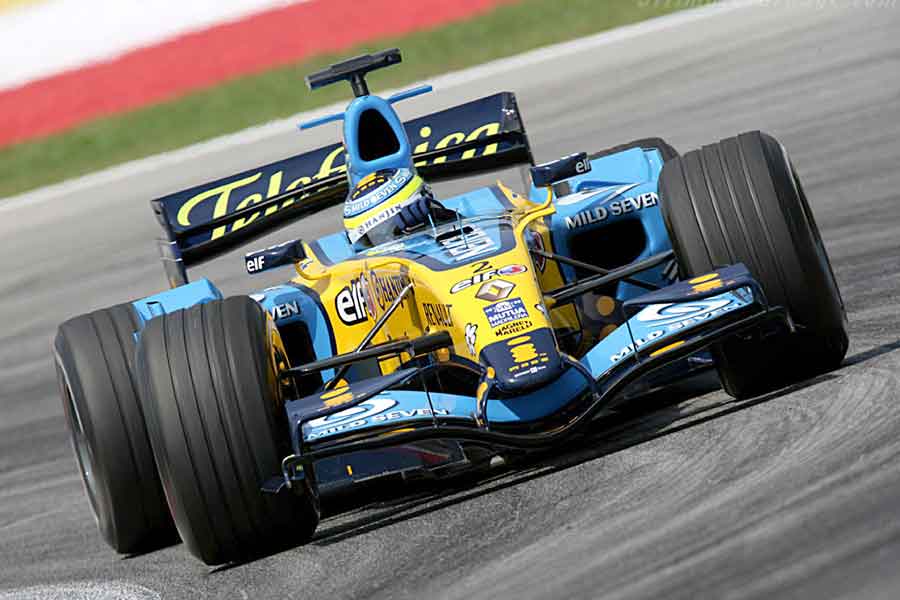Renault R26
The Renault R26 was the car with which Fernando Alonso and French manufacturer won the Formula 1 World Championship for the second time in a row.
Tuned mass damper was crucial
After winning both trophies in 2005, the Renault F1 Team wanted to continue its supremacy in the most popular racing championship. A new car was similar to Renault R25 but still, there were some differences. The aerodynamic package was completely new, with a tuned mass damper invented by Renault’s engineer Rob Marshall and was used to keep the front of the car stable over kerbs and through slow and fast corners.
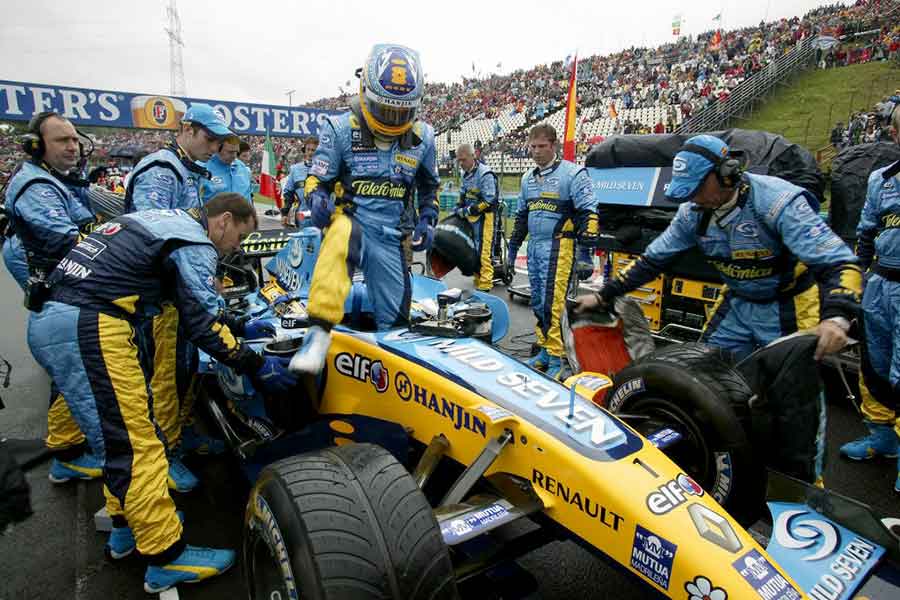
Fernando Alonso won his second F1 title in 2006 driving the Renault R26
Even though the system has been legal for over half of the season, FIA decided to ban tuned mass dampers stating that no moving parts can influence the aerodynamics of the car. Renault was hit hard with this ban but already had enough points to keep the lead in the Championship and to win the title.
New engine and gearbox
Another big change in comparison to the Renault R25 was a new engine. The Renault R26 used smaller V8 which produced less power but was more efficient which allowed some improvements and modifications to be done to the other parts of the car.
For the first time, Renault used 7-speed titanium gearbox which, combined with a new powerplant which produced less torque, allowed the team to exploit the engine’s characteristics in an optimal way.
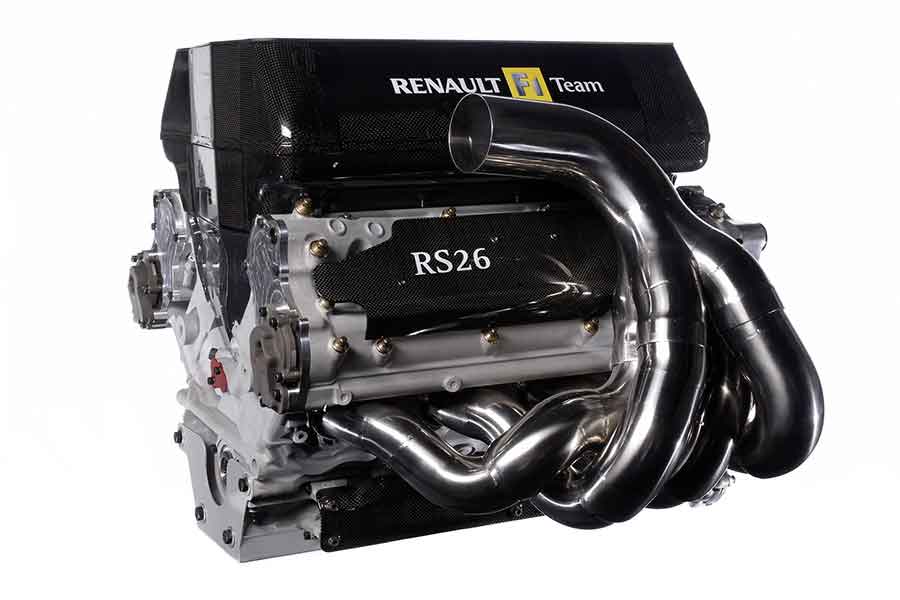
Renault RS26 engine
In many other aspects, Renault R26 was pretty similar to its predecessor. The previous model and its dynamical qualities were praised by Fernando Alonso and Giancarlo Fisichella, who stayed with the team for another season, so there wasn’t any reason to change or develop too many things on the well-designed cars.
Excellent first half of the year
The start of the campaign went well for the Renault team. Alonso won the season-opening race in Bahrain, while in the next race in Malaysia, the French team scored the only 1-2 finish when Fisichella won the race and Alonso finished 2nd. The Australian Grand Prix was the next race on the calendar and Alonso scored the second triumph of the season.
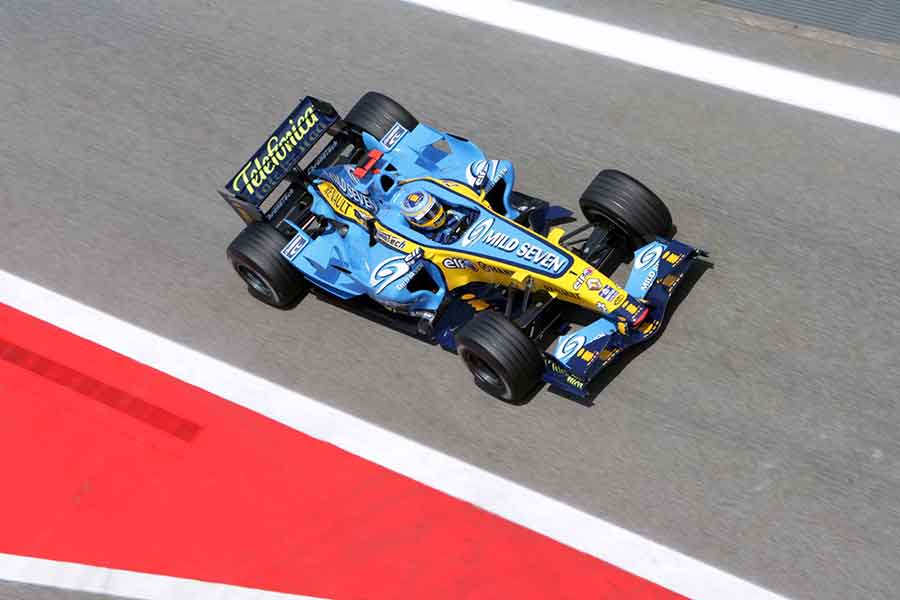
Fernando Alonso, Renault R26, 2006 Spanish Grand Prix
The reigning champion Alonso finished 2nd in the next two races, at Imola and Nurburgring, while Fisichella finished 8th and 6th respectively. However, Alonso dominated in the next four races. He scored consecutive wins at Catalunya Circuit, Monaco, Silverstone, and Circuit Gilles Villeneuve. His Italian teammate was 3rd in Spain and scored points in other three races and the situation after the first half of the season looked almost perfect for Alonso and Renault.
Spaniard topped the standings and had an advantage of 25 points to Michael Schumacher. In the Constructors’ championship, Renault led by 34 points to Ferrari.
Facing the competition in the second half of the season
The second half of the campaign was much tougher for Renault, especially after tuned mass damper was banned. In the remaining nine races, Renault was able to win only once but had numerous strong finishes. The only poor moment was the Hungarian Grand Prix in which both cars retired from the race.
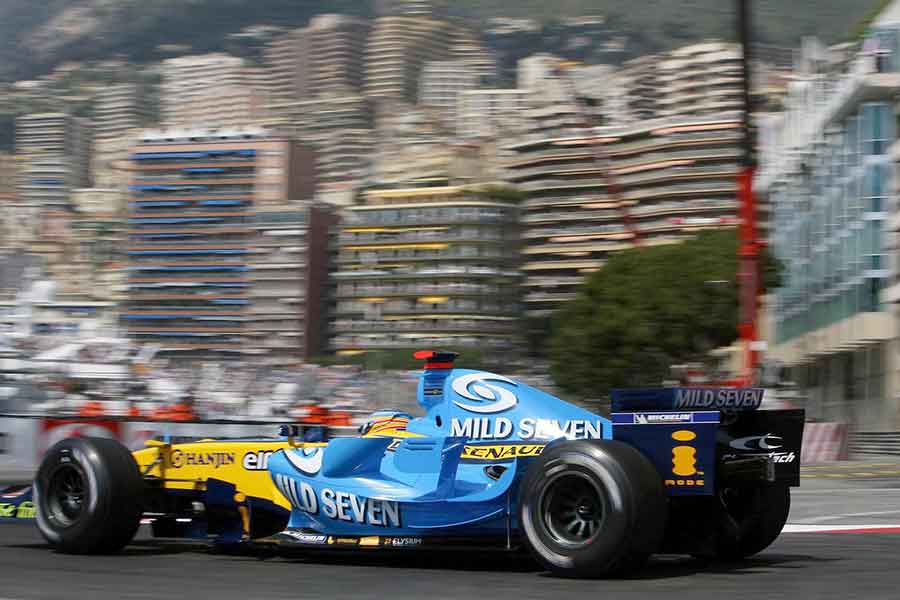
Renault R26, 2006 Monaco Grand Prix
In the US Grand Prix, Fisichella finished 3rd, while in the next race in France Alonso was 2nd. In the German Grand Prix, for the first time in 2006, both cars failed to score the podium and after that race, another disappointment happened at Hungaroring.
With five races remaining, Alonso was still at the top of the standings, with just 10 points ahead of Schumacher, while the Renault team was 7 points ahead of Ferrari.
Japanese Grand Prix was decisive
Alonso was able to recover in the Turkish Grand Prix after finishing 2nd but retired in the next race at Monza. With three races to go, Fernando’s lead reduced to only two points but his and the team’s form improved when it was crucial.
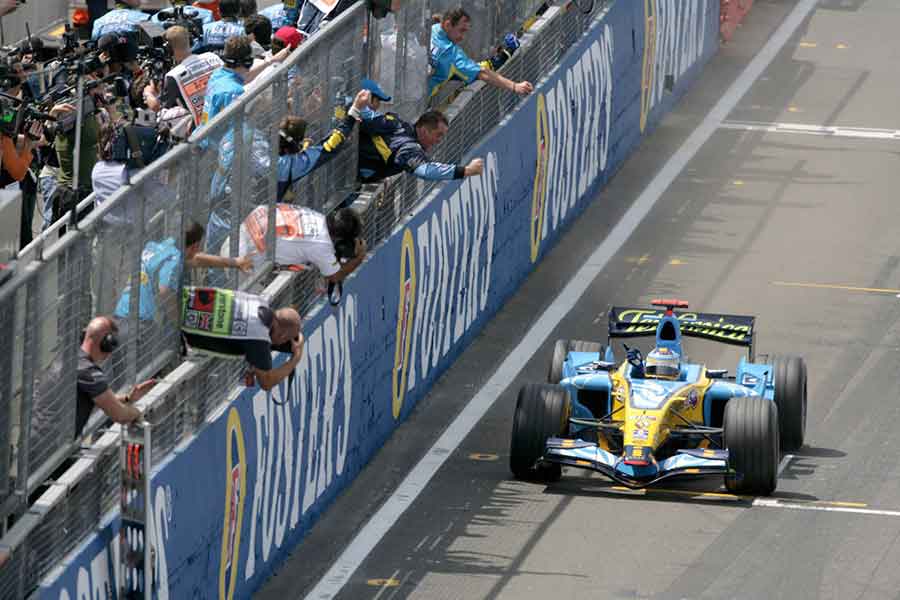
Renault team celebrates Alonso’s triumph
Schumacher won the Chinese Grand Prix, while Alonso finished 2nd, so these drivers were equal in the standings. The next race was in Japan and probably was decisive in the championship battle. Fernando won the race at Suzuka Circuit, while Schumacher retired. Before the final race at Interlagos, Spanish racer had an advantage of 10 points and eventually clinched his second title by finishing 2nd.
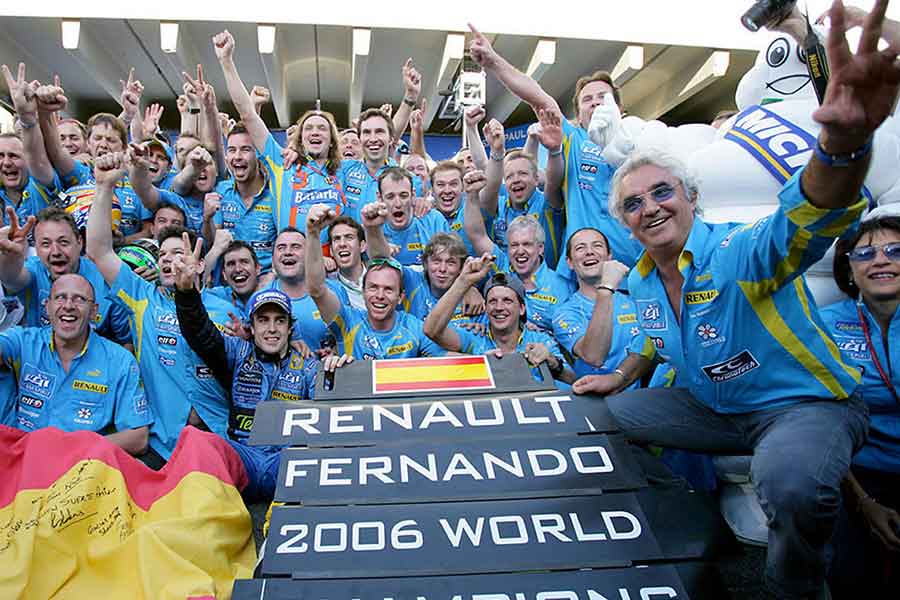
Renault and Fernando Alonso – 2006 F1 champions
At the same time, Renault also secured another trophy, thanks not only to Alonso’s result but also because of Fisichella’s good driving in the last three rounds when he twice finished 3rd. The French team at the end of the season was five points clear of Ferrari and that was the last Renault’s title so far.
What do the numbers say?
In 2006 Formula 1 World Championship Renault R26 won 8 out of 18 races (Alonso 7, Fisichella 1) and amassed a total of 206 points. Six pole positions were won by Alonso and one by Fisichella, while the Spaniard scored five fastest laps over the year.
Renault R26 technical specifications
| Chassis | Moulded carbon fiber and aluminum honeycomb composite monocoque with engine |
| Lenght | 4.800 mm |
| Height | 950 mm |
| Width | 1.800 mm |
| Weight | 600 kg |
| Suspension (front & rear) | Double wishbone, pushrod operating torsion bar |
| Wheelbase | 3.100 mm |
| Front track | 1.450 mm |
| Rear track | 1.400 mm |
| Engine | Renault RS26, 90° V8 2.4 l, mid-mounted, 2.398 cc |
| Gearbox | Titanium longitudinal, 7+1speed |
| Brake system | Hitco carbon discs and pads, AP racing calipers |
| Electronics | Renault F1 Team & Magneti Marelli |
| Fuel | Elf |
| Tyres | Michelin |
Video – Fernando Alonso, Renault R26, Italian Grand Prix


